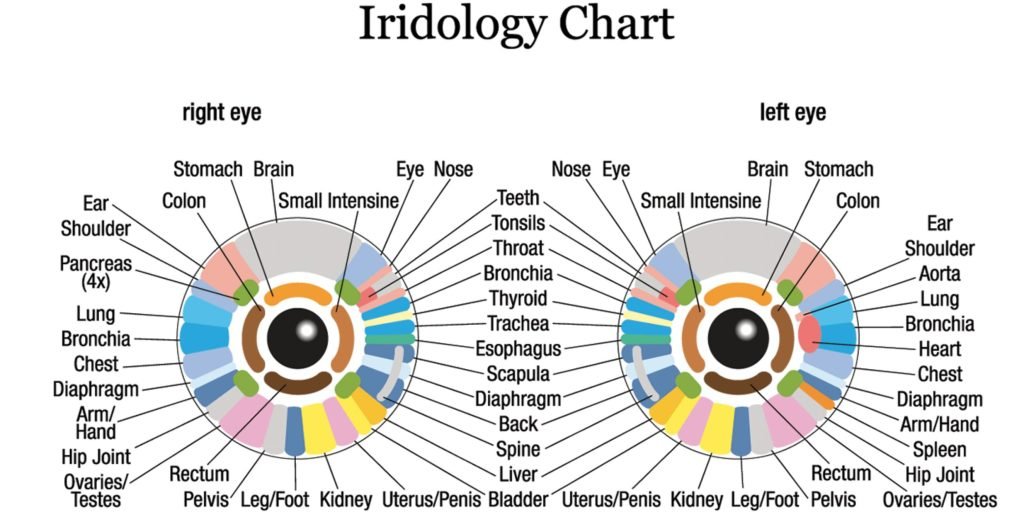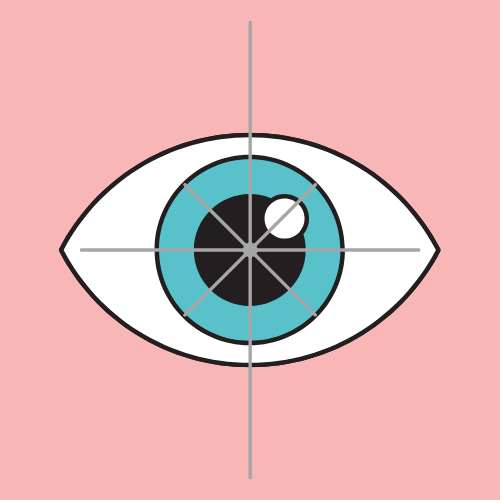Iridology is a technique in which the patterns, colours and other characteristics of the iris can be examined to determine information about a patient’s systemic health.
Practitioners match their observations to iris charts, which divide the iris into zones that correspond to specific parts of the human body. Iridologists see the eyes as ‘windows’ into the body’s state of health. Like fingerprints or faces, no two irises are exactly alike.

Each organ and structure of the right side of the body corresponds to a specific sector on the iridology chart’s map of the right iris.
The same for the left side; each structure or organ found on the left side of the body has an assigned sector in the map of the left iris.
The iris structure is so unique it is now being used for security identification at ATM machines and airports.
Iridology research began in in Europe in 1670. Dr Philippus Meyens published a paper describing the eyes of his patients when they became sick or injured. He noticed changes in the eye that came with subsequent healing and was able to link points on the iris to specific parts of the body. By observing the eye, he was eventually able to identify areas in the body in need of support which would show up in the eye long before physical symptoms would start to show.
The main principles of Iridology
The four principles that form the cornerstones of iridology are:
Assessing the condition of the nerves
Assessing the condition of the blood and lymph system
Checking that there is adequate circulation
Exploring nutrition – rest quality, breathing – state of mind
How do Iridologists work
An iridologist, looks at a person’s eyes and uses what they see to determine any physical ailments that may be present in the body.
Iridologists generally use equipment such as a torch and magnifying glass or special camera to examine a patient’s irises for tissue changes, as well as features such as specific pigment patterns and irregular stromal architecture.
The markings and patterns are compared to an iris chart that correlates zones of the iris with parts of the body. Typical charts divide the iris into approximately 80–90 zones. For example, the zone corresponding to the kidney is in the lower part of the iris.
Uses of Iridology
Iridologists understand that details in the iris reflect changes in the tissues of the corresponding body organs, which means that a condition in the body translates to a noticeable change in the appearance of the iris.
For example, acute inflammatory, chronic inflammatory and catarrhal signs may indicate involvement, maintenance, or healing of corresponding distant tissues, respectively.
Other features that iridologists look for are contraction rings and Klumpenzellen (degenerated pigmentation spots), which may indicate various other health conditions, as interpreted in context. The fundamental goal of iridology is prevention of serious degenerative processes by integrating nutritional, mechanical (chiropractic), spiritual and emotional support in a truly holistic manner.



